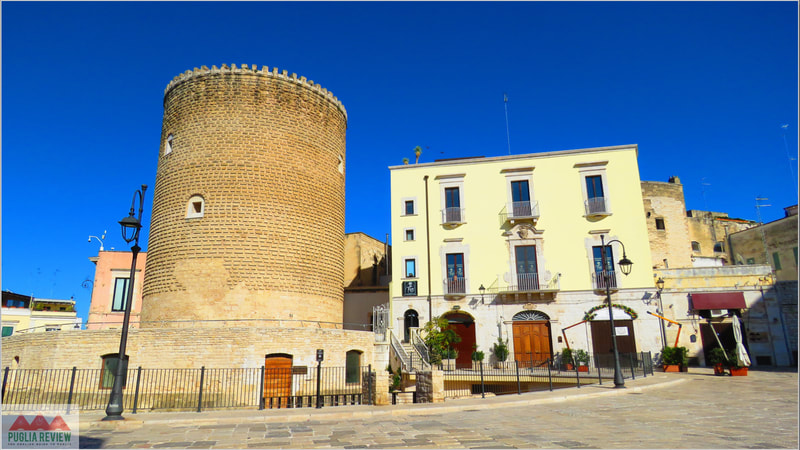Bitonto
|
By Dion Protani
|
Latest update: 22 November 2023
|
|
The historic town of Bitonto is situated within the Metropolitan City of Bari province and has a population of around 54,000 residents.
It stands at an elevation of 118 metres above sea level while nearby places of interest include Bari, Ruvo di Puglia, Giovinazzo, Molfetta and Bisceglie. |
Related links
Profile
Bitonto is a historic town located in the province of Bari, in the Apulia (Puglia) region of Italy. Steeped in history and known for its beautiful architecture, Bitonto is a captivating destination for travelers seeking to explore the rich cultural heritage of Southern Italy.
History
Bitonto's history dates back to ancient times, with evidence of human settlements found in the area from the Bronze Age and the Iron Age. The town was an important center during the Roman period and was later influenced by various civilizations, including the Byzantines, Normans, and Swabians.
During the Middle Ages, Bitonto flourished as a center of art and culture, with the construction of impressive religious and civic buildings. The town's historical significance is also tied to its strategic location along the ancient trade routes.
Bitonto has witnessed several battles and sieges throughout its history, and its defensive walls and fortifications are a reminder of its past military importance.
During the Middle Ages, Bitonto flourished as a center of art and culture, with the construction of impressive religious and civic buildings. The town's historical significance is also tied to its strategic location along the ancient trade routes.
Bitonto has witnessed several battles and sieges throughout its history, and its defensive walls and fortifications are a reminder of its past military importance.
Highlights and nearby attractions
Bitonto's historic center is the main attraction for tourists, with its well-preserved medieval architecture and charming atmosphere. The town is often referred to as the "City of Towers" due to its numerous medieval towers that once served as defensive structures and symbols of social status.
The Bitonto Cathedral, officially known as the Cathedral of Saint Mary of the Assumption, is a prominent landmark in the town. This impressive Romanesque cathedral was built in the 12th century and features a stunning rose window and intricate sculptures on its façade.
Other notable religious buildings in Bitonto include the Church of San Francesco and the Church of Santa Maria degli Angeli, both showcasing fine examples of medieval architecture and religious art.
Bitonto's historical centre is a pleasure to explore, with its narrow streets, charming squares, and well-preserved palaces. The Palazzo Sylos-Calò is a striking building with a beautiful courtyard and frescoed ceilings.
The town hosts various cultural events and festivals throughout the year, offering visitors an opportunity to experience traditional music, dance, and cuisine. One of the most famous festivals is the "Disfida di Barletta," a historical reenactment of a medieval challenge that takes place annually.
Bitonto is renowned for its local culinary delights, including the famous "olive di Bitonto" (Bitonto olives), which are prized for their flavor and quality.
For nature lovers, Bitonto is located in close proximity to the Alta Murgia National Park, offering opportunities for outdoor activities and scenic hikes.
The Bitonto Cathedral, officially known as the Cathedral of Saint Mary of the Assumption, is a prominent landmark in the town. This impressive Romanesque cathedral was built in the 12th century and features a stunning rose window and intricate sculptures on its façade.
Other notable religious buildings in Bitonto include the Church of San Francesco and the Church of Santa Maria degli Angeli, both showcasing fine examples of medieval architecture and religious art.
Bitonto's historical centre is a pleasure to explore, with its narrow streets, charming squares, and well-preserved palaces. The Palazzo Sylos-Calò is a striking building with a beautiful courtyard and frescoed ceilings.
The town hosts various cultural events and festivals throughout the year, offering visitors an opportunity to experience traditional music, dance, and cuisine. One of the most famous festivals is the "Disfida di Barletta," a historical reenactment of a medieval challenge that takes place annually.
Bitonto is renowned for its local culinary delights, including the famous "olive di Bitonto" (Bitonto olives), which are prized for their flavor and quality.
For nature lovers, Bitonto is located in close proximity to the Alta Murgia National Park, offering opportunities for outdoor activities and scenic hikes.
Comune di Bitonto
|
Province: Metropolitan City of Bari
Region: Puglia Population: 53,457 (source: ISTAT 1 January 2022) Size: 173 km² Elevation: 118 metres Close by: Bari, Ruvo di Puglia, Giovinazzo, Molfetta, Bisceglie Recommended accommodation: Bed And Breakfast T57 |























